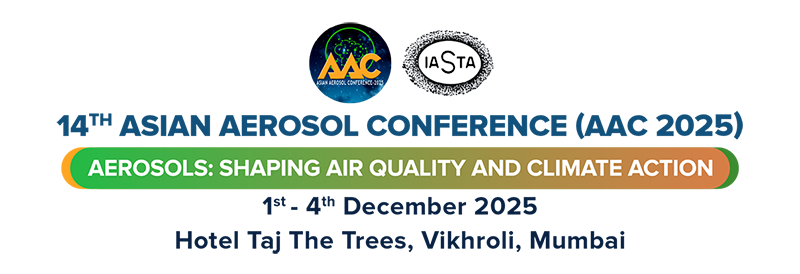Abstract Submission
The awardees will receive certificates/mementos and an APC waiver for paper submission to the AAC 2025 Special Issue
Abstract Submission Guideline
- The abstract should be two pages as per attached template.
- The abstract should be submitted in PDF format through the AAC 2025 India website. Any submission via email will not be accepted.
- Please use our template for abstract submission. (Download Template)
- Abstract Submission Deadline:
31st August 2025Closed - Acceptance Notification will be sent on/before
31st August 2025| 10th September 2025
Review Process
- The abstracts will be reviewed by the AAC 2025 Technical Program Committee
- Abstracts which do not fulfill the standards will not be accepted.
Copyright
By presenting a poster in AAC 2025, the Conference Organising Committee assumes the right to use images (with reference to the author) in future activities.
Technical Support
Should you require any support or further information and assistance, please do not hesitate to contact us: scientific@aacindia2025.in
Conference Sub-Theme
- Aerosol Physics
- Aerosol Nucleation & Growth
- Aerosol Coagulation
- Aerosol Condensation/Evaporation
- Aerosol Transport Properties & Fluid Dynamics
- Aerosol Optical Properties
- Aerosol Electrical Properties
Aerosol Fundamentals
- Aerosol Synthesis
- Aerosol Coating Applications
- Aerosol Filtration
- Particle Control Technologies
- Pharmaceutical and Biomedical Applications
- Combustion and High Temperature Aerosols
- Nanoparticle Aerosols
- Low Emission Technologies
Aerosol Technology
- Aerosol Climate Effects
- Application of Atmospheric Aerosols measurements from Satellites
- Aerosol Cloud Interactions
- Microphysical and Chemical Characterization of Atmospheric Aerosols
- Source Apportionment of Aerosols
- Atmospheric Ice Nucleation
- New Particle Formation
- Nuclear and Radioactive Aerosols
- Atmospheric Aerosol Modelling
Atmospheric Aerosols
- Instruments and Techniques for Physical, Chemical, Biological and Optical measurements
- Low-Cost Sensors and Networks
- Local, Regional, and Global Ground Networks for Aerosol Measurements
- Novel Measurement Principles & Techniques
- Miniaturized Instrumentation
- Aerosol Metrology: Calibration & Performance Evaluation
Aerosol Measurement Techniques
- Aerosol Exposure Assessment
- Indoor Air
- Bioaerosols
- Respiratory Tract Uptake, Translocation and Clearance
- Health Effects of Aerosols: Mechanistic and Epidemiological Analyses
- Occupational Exposure
Aerosols & Health
- Statistical Techniques for Data Interpretation
- Artificial Intelligence and Machine Learning Applications in Aerosol Science
- Online and Offline Data Analysis
- Visualization Tools
- Data Sharing Policies Including Open Data
- Data Fusion Techniques






